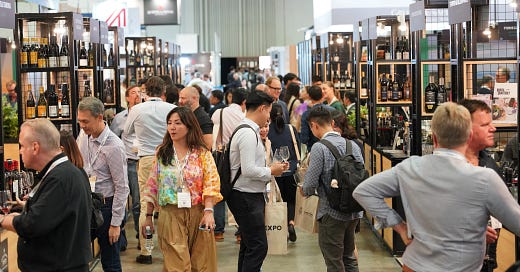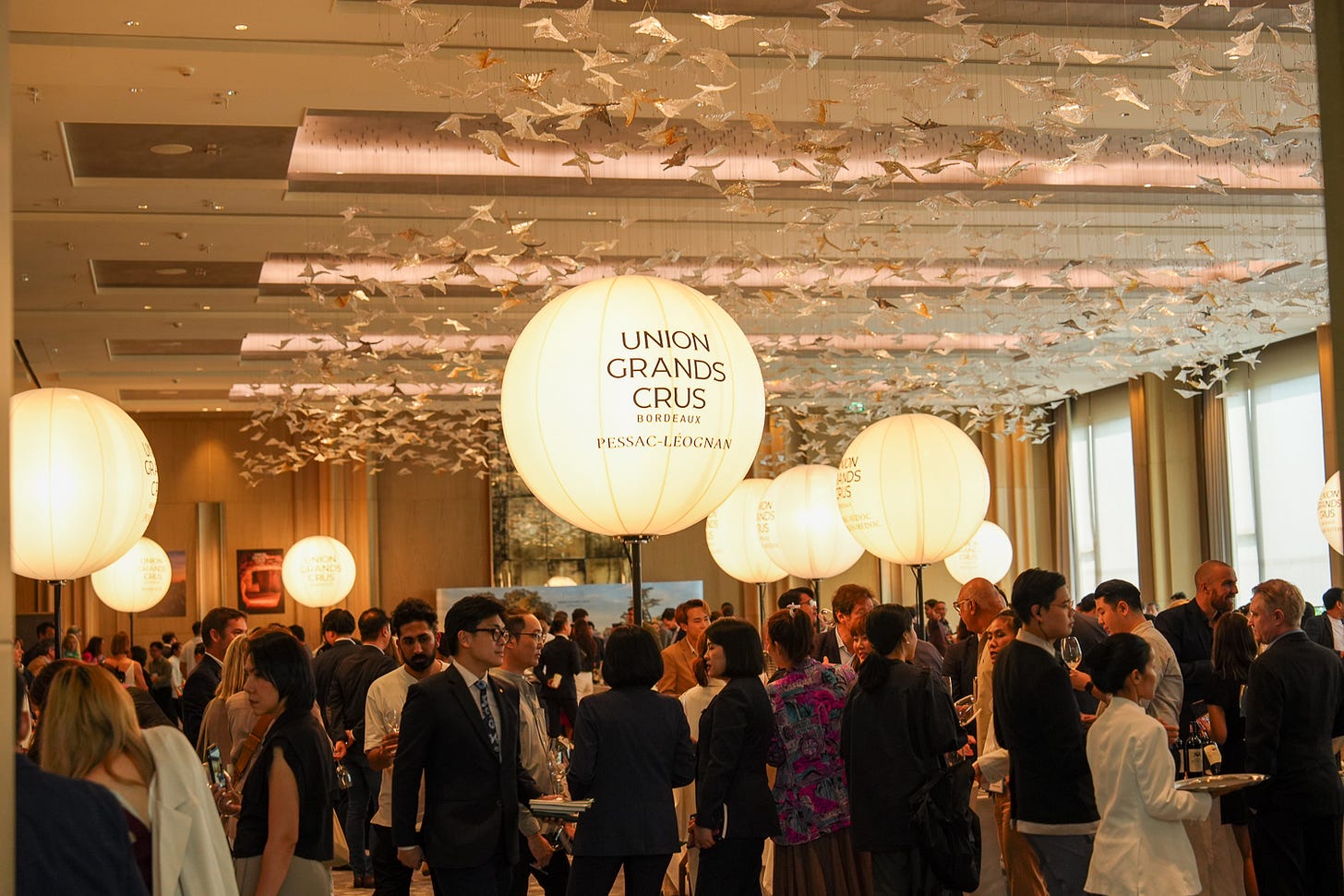Vinexpo Grew Up - But Didn’t Grow Bold
Grape Nomad's recap on Vinexpo 2025, Asia's biggest wine exhibition
Audio powered by Google’s Notebook LM
Vinexpo 2025 delivered a markedly larger, more polished exhibition compared to its previous edition in Singapore, offering a clearer lens through which to observe the shifting dynamics of the wine trade in Asia. For industry professionals and students alike, it functioned as both a networking hub and a learning platform. But beneath the surface of its expanded scale and sleek booths lay deeper tensions - between commercial dominance and artisanal relevance, as well as regional loyalty and global curiosity.
Panels Deliver!
Among the most encouraging developments was the quality and relevance of this year’s panel sessions. Unlike past iterations dominated by foreign experts speaking at rather than to the audience, many discussions featured regional professionals and long-time industry friends who brought grounded, locally relevant perspectives. Their contributions added depth and practical insight, particularly valuable for wine students and early-career professionals seeking to build meaningful networks in Southeast Asia’s complex trade landscape. A workshop that stood out for me was Reinventing Pairings: Wine & Asian Gastronomy led by 4 powerful industry figures from polar opposite backgrounds. That helped ignite a few different standpoints in my brain about a topic I’ve been diving deep into for the past 8 months.
Quiet Rebels: Austria, Victoria, and a Glimpse of the Future
A standout positive was the presence - albeit limited - of low-intervention winemakers, especially from Victoria and Austria (such as Patrick Sullivan, Xavier Goodridge, Chalmers, Jayden Ong, Lackner-Tinnacher, Thomas Buchmayer…). Their wines, marked by precision, freshness, and narrative clarity, stood in stark contrast to the heavily stylised offerings dominating the halls. These producers brought a sense of vitality and risk that felt refreshingly out of step with the otherwise commercial tone of the fair, offering a glimpse into what the next generation of wine in Asia could look like if given space.
Why Are We Still Clinging to Bordeaux?
However, the event’s limitations were difficult to ignore. The largest, most sought-out tasting event, focused on Bordeaux, felt like a relic of a bygone era. While Bordeaux’s presence in the Singapore market remains strong, its dominance at a major trade fair felt like a missed opportunity. In an age where curiosity and diversification define serious wine engagement, such a singular focus just reinforces hierarchy and risks serious stagnation. And that’s an issue if this event wants to speak to a new generation of drinkers, sommeliers and buyers.
Who’s Missing?
Compounding this narrow focus was the underwhelming geographic diversity on display. New Zealand, South Africa, Georgia, and Southeast Europe - regions that have shown tremendous growth and innovation in recent years - were barely present, if at all. Their absence highlighted a persistent bias toward mainstream, volume-driven producers at the expense of cultural and stylistic breadth. A trade fair that claims global relevance can’t keep showing us the same corners of the world year after year and expect the crowd to stay inspired.
The sea of heavily commercialised wines and redundant styles already saturating the Singapore market further dulled the sense of discovery. For those hoping to find small, artisanal producers or new stylistic directions, the fair offered few opportunities (which is a paradox since Rob Temple had a great presentation on the Future of Wine in the region). The dominance of familiar, branded profiles - polished, predictable, and market-safe - risked reducing Vinexpo to an echo chamber of what is already known and sold. Not to say that quality was lacking - but imagination was.
In conclusion, Vinexpo 2025 did demonstrate growth. That much is clear. But growth without range is just repetition at scale. The fair has evolved into a valuable space for education, networking, and trade visibility in Southeast Asia. But to remain relevant, it must broaden its vision, diversify its exhibitor base, modernise its digital infrastructure, and carve out more room for the innovative, the artisanal, and the underrepresented. For now, it is a fair caught between scale and stagnation - promising in ambition, but still tethered to a past that no longer defines the future of wine.
Were you at Vinexpo? I’d love to hear what stood out - or didn’t. What felt missing? What surprised you?
As always, thanks for reading - stay thirsty, stay curious. If you would like to further support me, you can follow me on Instagram or LinkedIN or tell your friends about this newsletter.
Aleksandar







Appreciate the insights from someone who didn't make it to VinExpo! Also, curious to check out some of these Austrian producers. I was impressed by several Austrian producers at Slow Wine Bologna last year, too.
Great analysis of a major global wine fair and how it can better relate to and add value to its host market